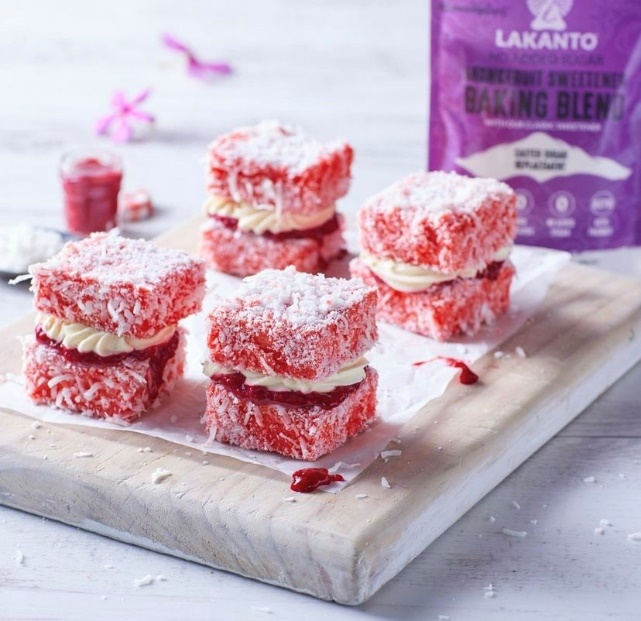Not all processed foods are bad for you. Here’s what you can tell from reading the label
- Written by Clare Collins, Laureate Professor in Nutrition and Dietetics, University of Newcastle

If you follow wellness content on social media or in the news, you’ve probably heard that processed food is not just unhealthy, but can cause serious harm.
Eating a diet dominated by highly processed foods means you’re likely to consume more kilojoules than you need, and greater amounts of salt, sugar – as well as food additives.
But not all processed foods are equal, nor bad for you. Here’s what to look out for on food labels if you want to buy processed, but convenient, foods.
What do the processing categories mean?
Researchers use the Nova processed food classification system[1] to group foods into four processing levels.
Group 1: Unprocessed or minimally processed foods are either in their natural state or have minimal processing. They’re basic foods you could eat straight away, such as vegetables and fruit, or foods that only need minimal processing to make them safe and palatable, such as eggs, meat, poultry, fish, oats, other grains, plain pasta, legumes, milk, plain yoghurt, ground herbs and spices, or nuts with shells.
Group 2: Processed culinary ingredients are derived from group 1. These are used in cooking to enhance flavour and texture, and include oils, sugar and honey.
Group 3: Processed foods are treated using traditional processing methods such as canning, bottling, fermenting, or salting to extend shelf life. These include canned fruits, tomato paste, cheese, salted fish, and breads with minimal ingredients. You could make these foods in a home kitchen.
Group 4: Ultra-processed foods are industrially produced with ingredients and additives not normally found in home kitchens, and have little, if any, group 1 items left intact. These foods are engineered to be hyper-palatable, meaning you can’t stop eating them, and have long shelf lives. Products include factory-made biscuits, snack foods, instant meals, frozen desserts, preserved meats, instant noodles, margarine, some breakfast cereals and sugar-sweetened drinks.
However, group 4 products vary greatly in their nutritional quality and the number and type of food additives used to manufacture them.
What’s the concern about eating lots of ultra-processed foods?
About 42%[2] of Australians’ total energy intake comes from ultra-processed foods. These are relatively cheap and are energy-dense[3], but nutrient-poor. This means they can contain a lot of kilojules, salt and added sugars but are poor sources of nutrients the body needs such as vitamins, minerals and dietary fibre.
Studies have linked higher intakes[4] of ultra-processed foods with poorer diet quality and worse health outcomes. A review of 122 observational studies[5] found people with the highest intakes (compared with the lowest) were about 25% more likely to have had a decline in kidney function. They were 20% more likely to be overweight, or have obesity or diabetes, and were 40% more likely to have common mental health conditions such as depression.
However, a recent review highlighted[6] that the health impact of these foods and drinks varies depending on their category. Products such as sugar-sweetened drinks can negatively affect health, while others – such as cereals with added vitamins and minerals and some dairy products – can be neutral or even protective.
Some level of food processing can improve food safety, extend shelf life and reduce food waste. This is likely to include the use of additives[7], such as emulsifiers, flavour enhancers, preservatives, food acids, colours and raising agents. Additives need to be approved by Food Standards Australia and New Zealand (FSANZ) after a safety assessment, with the lowest amount added to achieve the specific purpose in the food product.
However, some adults and children eat a lot of ultra-processed foods. This means they have high intakes of food additives, in terms of total amount and different types.
Researchers have raised concerns[9] about a potential link between high intakes and increased risks of some health conditions, ranging from mental health disorders to heart disease and metabolic disorders such as diabetes. The researchers called for transparent use of evidence to ensure public health messaging is kept up to date.
An observational study in more than 100,000 French adults also raised concerns[10] about potential “cocktail” effects of food additive combinations. Although more research is needed, they found some additive combinations were associated with a higher risk[11] for developing type 2 diabetes.
Finally, a recent review[12] highlighted the potential for additives, particularly emulsifiers, to damage the gut lining and alter the balance of healthy versus unhealthy gut microbes. This could potentially increase the risk of developing inflammatory bowel conditions.
What processed foods should you choose?
It depends on how they’re made, the additives used, how often you eat them, and how much you have.
When choosing processed foods:
-
Read the ingredient list on the food label. It tells you a lot about the level of processing and additives used. Look for products that contain minimal to no additives, and ingredients that could be found in a home kitchen. Note that additives could be listed by name or number[13].
-
If there are a number of products in the same category, choose the one with more Health Stars[14] as it will contain less salt, saturated fat and added sugars, compared to products with fewer Health Stars.
-
Think about how often you eat the product. If you do eat it weekly or more often, spend more time comparing products before making a final choice.
While you might expect all Nova 3 processed foods to be healthier than Nova group 4 (ultra-processed), this isn’t always the case. Nova group 3 items don’t necessarily meet the nutrient criteria that deems them “healthy”. They could still contain excessive amounts of added salt, saturated fat or sugars.
For help to review the level of processing alongside the nutrient criteria, consider using an app such as Open Food Facts[15]. This assigns food products[16] a Nova group score, a nutrition score, and another to rate its impact on the environment.
Read more: Ultra-processed foods might not be the real villain in our diets – here’s what our research found[17]
References
- ^ the Nova processed food classification system (pubmed.ncbi.nlm.nih.gov)
- ^ 42% (doi.org)
- ^ and are energy-dense (doi.org)
- ^ higher intakes (doi.org)
- ^ review of 122 observational studies (doi.org)
- ^ a recent review highlighted (doi.org)
- ^ additives (www.foodauthority.nsw.gov.au)
- ^ Kyle Roxas/Getty Images (www.pexels.com)
- ^ raised concerns (doi.org)
- ^ raised concerns (doi.org)
- ^ a higher risk (doi.org)
- ^ review (doi.org)
- ^ name or number (www.foodauthority.nsw.gov.au)
- ^ Health Stars (www.healthstarrating.gov.au)
- ^ Open Food Facts (world.openfoodfacts.org)
- ^ assigns food products (au.openfoodfacts.org)
- ^ Ultra-processed foods might not be the real villain in our diets – here’s what our research found (theconversation.com)





















